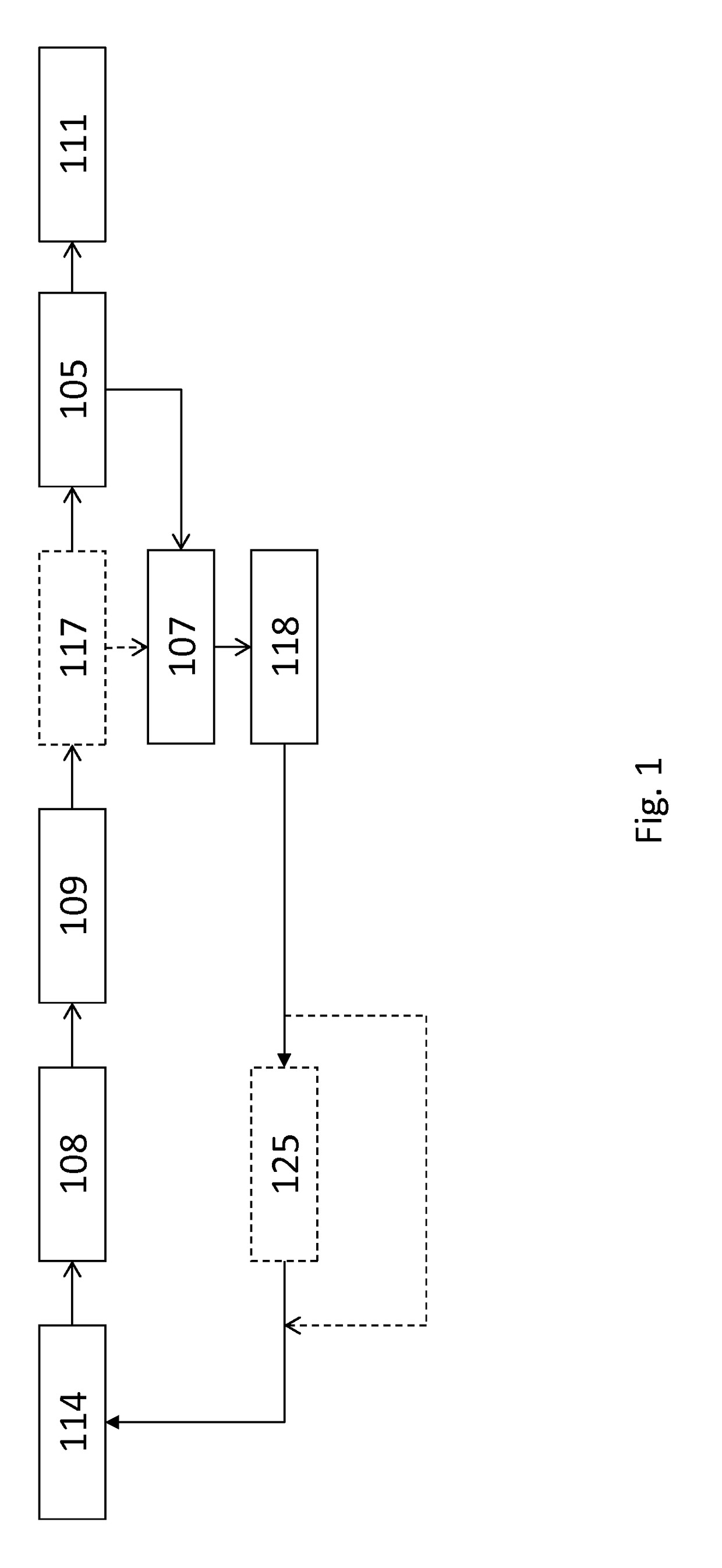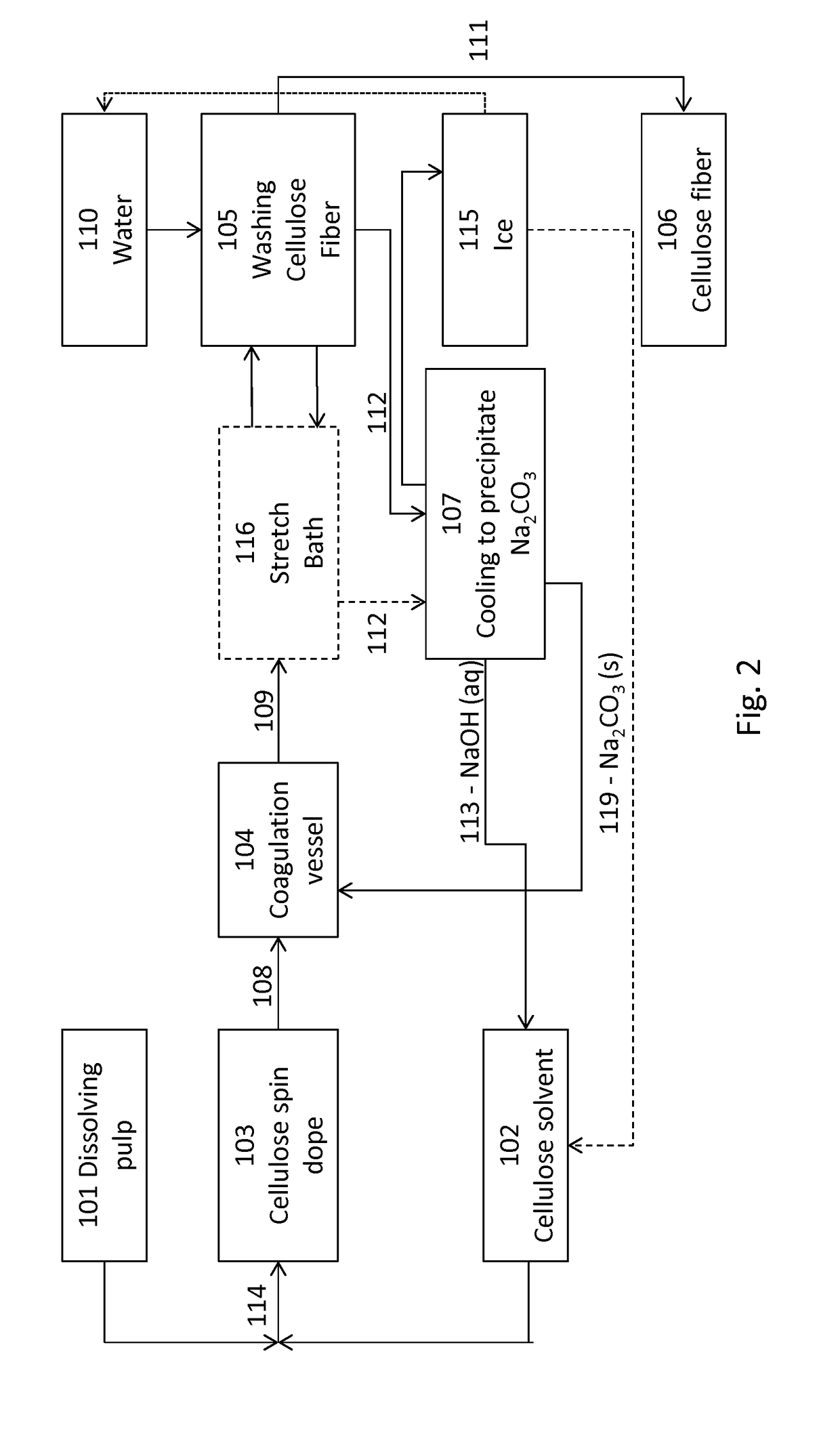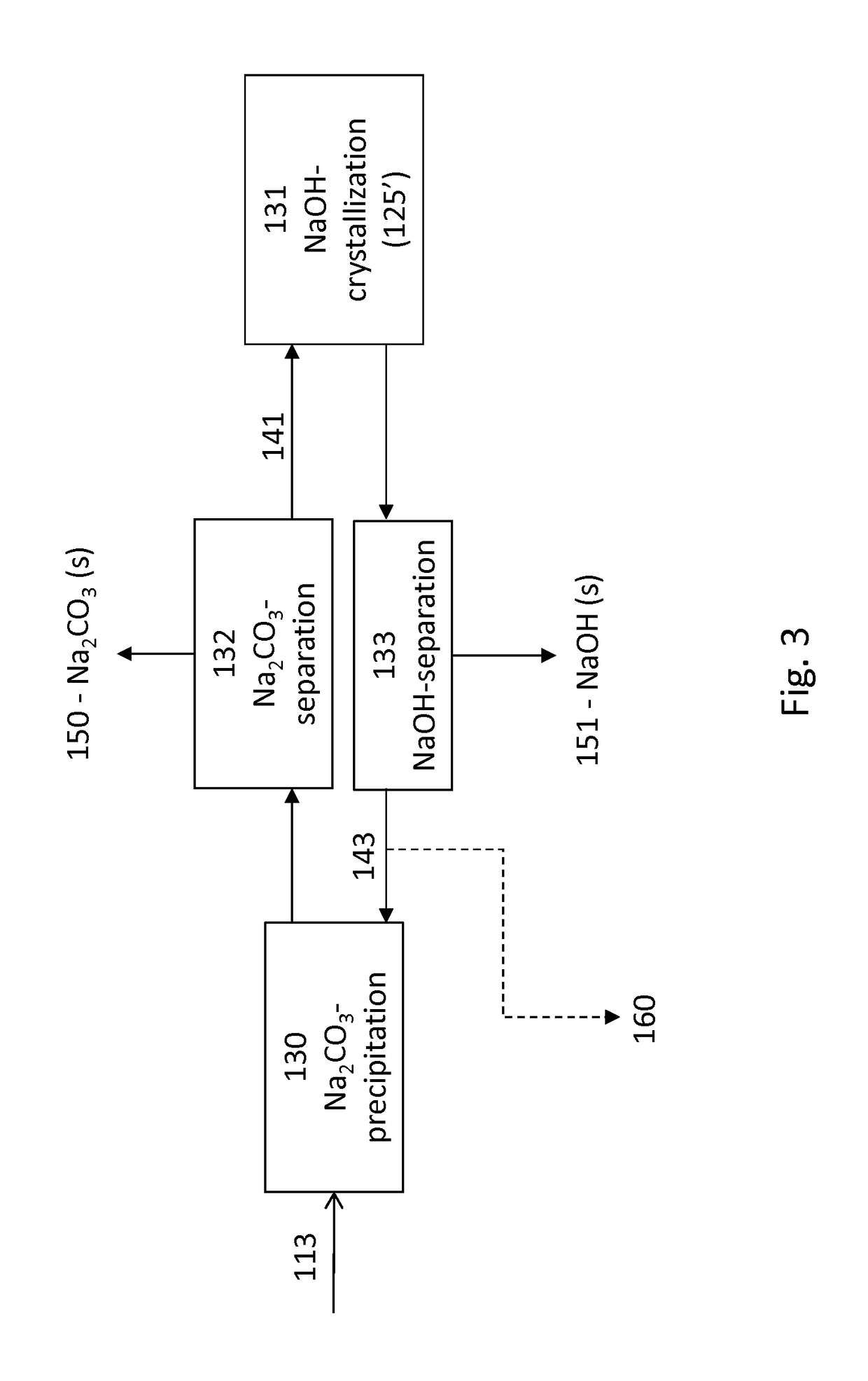Process for spinning dissolved cellulose
a technology of dissolved cellulose and spinning process, which is applied in the direction of cellulose solution, textile/flexible product manufacturing, fibre chemical features, etc., can solve the problems of low cellulose concentration in the spinning process, process does not constitute a viable industrial process, and no industrial process is economically feasible so far. , to achieve the effect of reducing the solubility of coagulation and high purity
- Summary
- Abstract
- Description
- Claims
- Application Information
AI Technical Summary
Benefits of technology
Problems solved by technology
Method used
Image
Examples
example 1
[0095]A starting solution was prepared by mixing 1100 g of solvent (10 wt % NaOH; 1.5 wt % ZnO) with 200 g of coagulation bath liquid (18.3 wt % Na2CO3) to provide 1300 g of solution (containing 8.46 wt % NaOH; 2.81 wt % Na2CO3; 1.27 wt % ZnO). The solution was gradually cooled and samples were taken and analyzed.
TABLE 1Remaining concentration of NaOH, Na2CO3,and ZnO respectively after precipitating Na2CO3CompoundStart−2.0° C.−6.0° C.−9.6° C.−15.0° C.−19.6° C.NaOH (wt %)8.58.68.89.412.114.8Na2CO2 (wt %)2.92.51.61.30.920.65ZnO (wt %)1.11.11.21.31.72.2Na2CO2 (%) after2.72.31.51.10.610.35dilution with iceto 8 wt % NaOH
[0096]As can be seen from table 1, cooling the solution not only decreases the concentration of Na2CO3, but also increases the concentration of NaOH and ZnO at low temperatures. In the example, the concentration of NaOH and ZnO, respectively, starts to increase once the temperature is lowered below −10° C., due to freezing water to floating ice, which reduces the liquid m...
PUM
| Property | Measurement | Unit |
|---|---|---|
| temperature | aaaaa | aaaaa |
| temperature | aaaaa | aaaaa |
| temperature | aaaaa | aaaaa |
Abstract
Description
Claims
Application Information
 Login to View More
Login to View More - R&D
- Intellectual Property
- Life Sciences
- Materials
- Tech Scout
- Unparalleled Data Quality
- Higher Quality Content
- 60% Fewer Hallucinations
Browse by: Latest US Patents, China's latest patents, Technical Efficacy Thesaurus, Application Domain, Technology Topic, Popular Technical Reports.
© 2025 PatSnap. All rights reserved.Legal|Privacy policy|Modern Slavery Act Transparency Statement|Sitemap|About US| Contact US: help@patsnap.com



